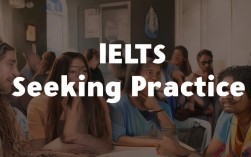托福口语 environment

托福口语考试中,“environment”是一个高频且重要的主题,涵盖环境保护、气候变化、可持续发展、个人行为对环境的影响等多个维度,无论是独立口语任务中的个人观点阐述,还是综合口语任务中的信息整合与复述,掌握这一主题的核心词汇、观点框架和表达技巧,都能帮助考生更自信、更流畅地完成作答,本文将从环境主题的核心考点、高频词汇与句型、结构化答题策略以及备考建议四个方面,为考生提供全面指导。
环境主题的核心考点分析
托福口语中的“environment”主题并非泛泛而谈,而是聚焦于具体问题、原因分析、解决方案及个人责任,以下是常见考点分类:
环境问题与影响
- 气候变化:全球变暖、极端天气(如飓风、干旱)、海平面上升等。
- 污染:空气污染(PM2.5)、水污染(工业废水、塑料垃圾)、土壤污染(农药、重金属)。
- 生物多样性减少:森林砍伐、物种灭绝、栖息地破坏。
- 资源枯竭:化石燃料过度开采、水资源短缺、森林资源减少。
解决方案与政策
- 政府层面:推广可再生能源(太阳能、风能)、制定环保法规(如“碳税”)、限制一次性塑料制品。
- 企业层面:发展绿色技术(如电动汽车)、采用循环经济模式(废物回收利用)、减少碳排放。
- 个人层面:垃圾分类、节约水电、绿色出行(骑行、公共交通)、减少肉类消费。
个人观点与经历
- 考常被要求结合自身经历,“Describe a time you took action to protect the environment.”(描述一次你参与环保行动的经历)或 “Do you think individuals can make a difference in environmental protection? Why or why not?”(你认为个人能否对环保产生影响?)。
高频词汇与句型积累
精准的词汇和多样的句型是口语高分的基石,以下是环境主题的核心表达:
核心词汇
| 类别 | 词汇 |
|---|---|
| 环境问题 | climate change (气候变化), deforestation (森林砍伐), pollution (污染), extinction (灭绝), carbon footprint (碳足迹) |
| 解决方案 | renewable energy (可再生能源), recycling (回收), conservation (保护), sustainable development (可持续发展) |
| 政策行动 | environmental regulations (环保法规), carbon tax (碳税), ban on plastic (塑料禁令) |
| 个人行为 | reduce waste (减少浪费), save energy (节约能源), use public transport (乘坐公共交通) |
高分句型
-
描述问题:
- “The increasing frequency of extreme weather events, such as hurricanes and heatwaves, has been directly linked to global warming.”(极端天气事件频发,如飓风和热浪,直接与全球变暖相关。)
- “Plastic pollution in oceans poses a severe threat to marine life, with over 8 million tons of plastic waste entering the water annually.”(海洋塑料污染对海洋生物构成严重威胁,每年超过800万吨塑料垃圾进入海洋。)
-
提出解决方案:
- “To address air pollution, governments should invest more in public transportation to reduce the number of private cars on the road.”(为解决空气污染,政府应加大对公共交通的投入,减少私家车数量。)
- “Individuals can contribute by adopting a zero-waste lifestyle, such as using reusable bags and bottles.”(个人可以通过零浪费生活方式贡献力量,例如使用可重复利用的袋子和瓶子。)
-
表达观点:
“In my opinion, environmental protection requires joint efforts from governments, businesses, and individuals—no single party can solve it alone.”(我认为环保需要政府、企业和个人共同努力,没有任何一方能单独解决。)
结构化答题策略
托福口语任务1(独立口语)和任务4(综合口语)常涉及环境主题,需采用不同的结构逻辑:
独立口语(Task 1 & 2):观点+理由+例子
结构框架:
- 开头:明确表态(同意/反对/选择)。
- 主体:给出1-2个理由,每个理由搭配具体例子(个人经历、社会现象、数据等)。
- 总结观点,重申重要性。
示例: “Do you think it’s important for schools to teach environmental education?”*
- 开头:“Yes, I strongly believe environmental education should be a mandatory part of school curricula.”
- 理由1:“Firstly, it raises students’ awareness of pressing issues like climate change. For example, many students don’t realize how daily habits, such as using plastic straws, contribute to ocean pollution until they learn about it in class.”
- 理由2:“Secondly, it equips students with practical skills. Schools can organize activities like recycling drives or tree-planting events, which teach kids how to take action directly.”
- “In short, environmental education not only informs but also empowers the next generation to become responsible stewards of the planet.”
综合口语(Task 4):阅读+听力信息整合
结构框架:
- 引入:概括阅读和听力的核心主题(如“Both the reading and lecture discuss solutions to reduce plastic waste”)。
- 阅读要点:简要总结阅读中的主要方案(如“Reading proposes banning single-use plastics”)。
- 听力要点:用“However/In addition”等连接词过渡,补充听力中的支持细节或案例(如“However, the professor argues that a ban alone is insufficient; she suggests using biodegradable materials as an alternative”)。
- 强调两者的关联(如“Thus, combining policy and innovation offers a more effective solution”)。
备考建议
积累观点与素材
- 关注环保类纪录片(如《我们的星球》《塑料海洋》)、新闻报道(如联合国气候大会、各国环保政策),积累具体案例和数据。
- 针对“个人环保经历”类话题,准备2-3个真实故事(如参与社区垃圾分类、减少使用空调等)。
模拟练习与反馈
- 使用托福口语真题或模拟软件,限时练习环境主题题目,录音并回听,注意流利度、发音和逻辑连贯性。
- 寻求老师或同伴反馈,重点纠正语法错误(如主谓一致、时态)和表达不地道的问题。
强化逻辑与表达
- 使用“Firstly/Secondly/Finally”“For example/For instance”等连接词,使答题结构清晰。
- 避免重复用词,通过同义替换(如用“protect the environment”替代“save the Earth”)提升语言丰富度。
FAQs
Q1: 托福口语中描述环境问题时,如何避免内容空洞?
A1: 需结合具体细节和数据,与其说“污染很严重”,不如说“Air pollution in Beijing causes over 1 million premature deaths annually, according to a 2025 WHO report.”(世界卫生组织2025年报告显示,北京空气污染导致每年超过100万人过早死亡。)加入个人观察(如“I remember seeing the smog cover the city skyline for weeks last winter”)也能让内容更生动。
Q2: 综合口语任务中,如何快速区分阅读和听力的观点差异?
A2: 阅读材料通常提出一个宏观方案(如“政府应限制塑料生产”),而听力可能从以下角度补充:①方案的优势(如“减少塑料污染”);②方案的不足(如“可能导致企业失业”);③替代方案(如“推广可降解材料”),听时注意信号词,如“However”“The professor points out that”,这些词常提示观点转折或补充。











